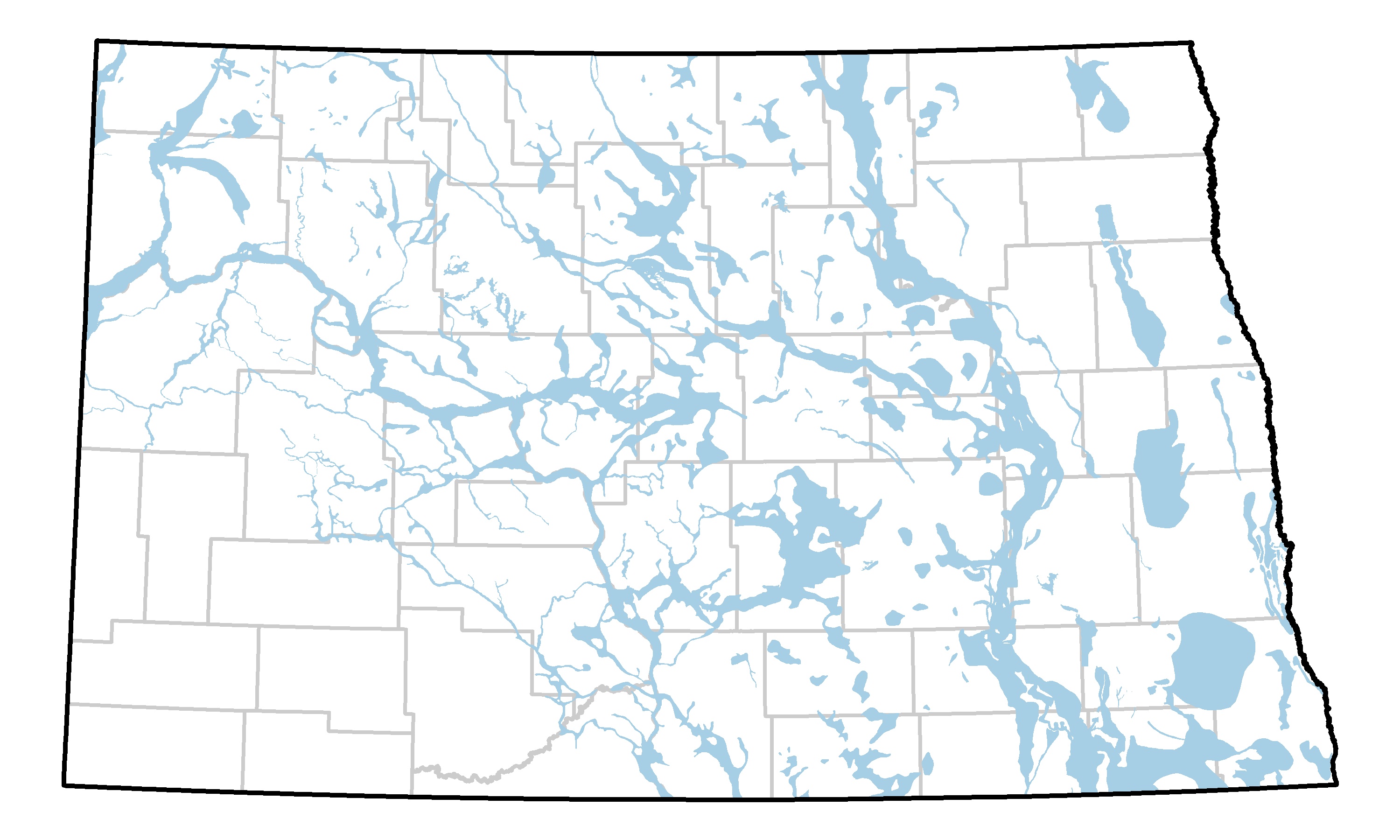The majority of North Dakota’s groundwater resources consist of glacio-fluvial deposits that do not provide large storage reserves (Figure 1). These systems are very susceptible to climatic conditions and as such respond fairly quickly to stress such as drought and the impacts of major development. Conversely, these systems also respond well to recharge events.
The Department of Water Resources (DWR) has always applied a conservative approach to water appropriation with the primary focus on the protection of senior water rights and the long-term sustainability of the state’s groundwater resources. Historically, the DWR has taken an incremental approach to water appropriation where requested appropriation has been approved in stages. This approach has provided the utility to observe and confirm that the additional stress introduced through increased appropriation is beneficial and sustainable and fits within the known constraints of the system. This approach has also provided the opportunity to modify and adapt methodologies to better define sustainable limits that may be unique to each aquifer and region.
Given the growth and evolution of water development in North Dakota, many of state’s groundwater systems are now approaching full appropriation. As many of state’s major groundwater systems approach sustainable limits, it will become increasingly difficult to approve additional appropriation without some form of augmentation such as Managed Aquifer Recharge (MAR).
The Department released an RFP for the purpose of evaluating MAR opportunities across North Dakota’s shallow glacial drift aquifers. This project was intended to provide narrative and guidelines for purposes of ranking the MAR potential for the state’s aquifers, and to provide recommendations for next steps pertaining to the development of potential MAR solutions in North Dakota. The work completed for the RFP includes a detailed report which was accompanied by an interactive map. The report establishes the requirements and criteria for the definition of 5 separate tiers by which the MAR potential for North Dakota’s glacial drift aquifers could be ranked.
- Tier 5 (Poor MAR Potential) : This rating indicates that the MAR would likely be ineffective or unsuitable given hydrogeological context.
- Tier 4 (Fair MAR Potential) : This rating suggests that MAR may provide some level of aquifer recharge potential or benefit, but there are significant limitations or inefficiencies.
- Tier 3 (Good MAR Potential) : This rating is given when MAR could be generally effective and appropriate in limited site-specific areas.
- Tier 2 (Very Good MAR Potential) : This rating indicates that MAR could be highly effective and well-suited to the local hydrogeological conditions.
- Tier 1 (Excellent MAR Potential) : This is the highest rating, signifying that MAR could be exceptionally effective, and sustainable when integrated into the overall water management system.
A map service was created for the North Dakota Department of Water Resources to evaluate the feasibility for the use of Managed Aquifer Recharge (MAR) in North Dakota’s glacial drift aquifers to extend and enhance their resiliency.
The Assessment_of_Managed_Aquifer_Recharge_Potential_for_Aquifers_in_North_Dakota.pdf (73 MB) report is available in PDF format.

